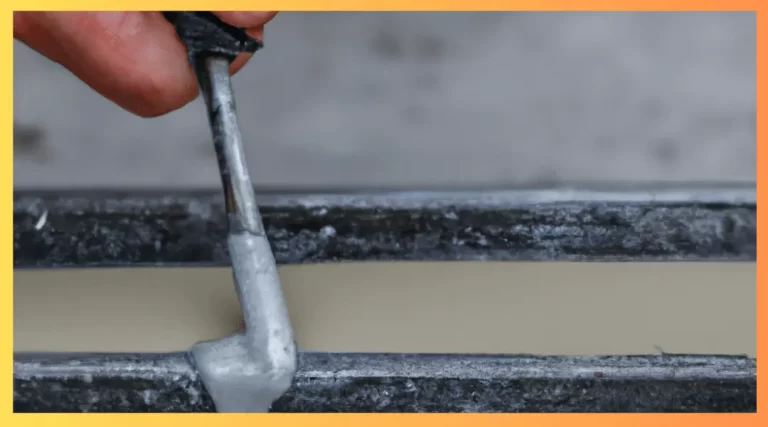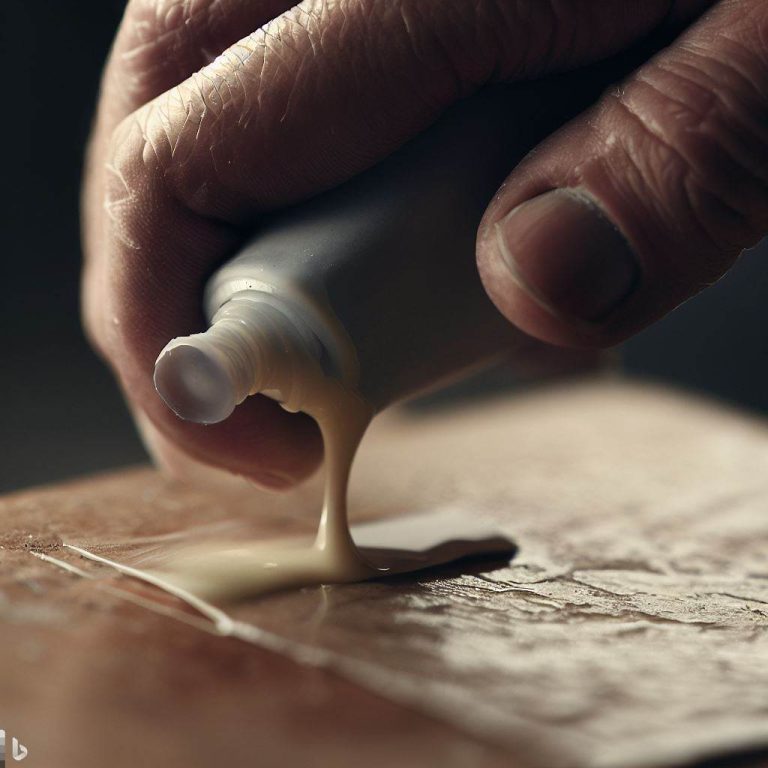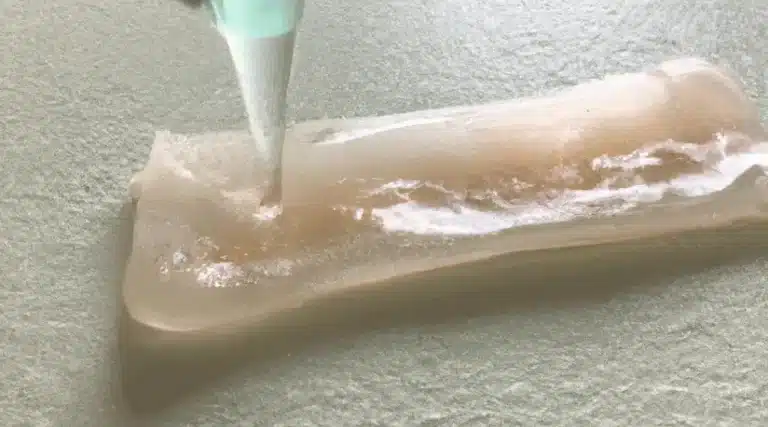Mod Podge is an incredibly versatile and popular crafting tool that acts as both a sealant and adhesive. Whether you are using it to decorate a wooden surface, create a decoupage masterpiece, or to glue fabric to a glass container, Mod Podge is a go-to for many DIY enthusiasts. However, what happens when it accidentally spills, smears, or gets stuck on a surface where you didn’t intend it to go? Don’t worry, you’re not alone in this sticky situation. Luckily, there are a few simple methods that you can use to easily remove Mod Podge from surfaces without causing damage.
Let’s dive into this peculiar topic and uncover the taste, health risks, and even unique uses of glue beyond its intended purpose.
What is Mod Podge and Why Can It Be Tricky to Remove?
Before we dive into the steps for removing Mod Podge, let’s take a closer look at what it is and why it can be tricky to remove. Mod Podge, a popular brand of water-based sealer, glue, and finish, is a common choice in crafts such as decoupage, scrapbooking, and furniture refinishing. It dries to a clear, matte finish and people can apply it to a wide variety of surfaces, including wood, fabric, paper, and glass.

While Mod Podge is known for being an excellent adhesive and finish, it can be challenging to remove from surfaces once it dries. Because it creates a strong bond with the surface, simply wiping it away with water or a cleaning agent is not effective. Depending on the surface and how long the Mod Podge has been allowed to dry, you may need to use different techniques to get it off. Luckily, with a bit of patience and the right materials, you can get rid of it without too much hassle.
Note that temperature and humidity can also affect Mod Podge. When applied in a humid environment, it may take longer to dry and cure properly, making it more challenging to remove. Exposing it to high temperatures can cause it to become brittle and crack, making removal without damaging the surface underneath more difficult. It’s always best to follow the manufacturer’s instructions for application and drying times to ensure the best results and easiest removal.
Materials You Will Need to Remove Mod Podge:
- Warm water
- White vinegar
- Rubbing alcohol or nail polish remover (containing acetone)
- Cotton balls or cloth
- Plastic scraper or an old toothbrush
- Microfiber cloth or sponge
Mod Podge is a popular crafting glue that is used to seal and finish a variety of projects. However, if you need to remove Mod Podge from a surface, it can be a bit tricky. One important thing to keep in mind is that Mod Podge is water-soluble, so using too much water can actually make the problem worse. Instead, try using a mixture of warm water and white vinegar to gently loosen the Mod Podge. You can also use rubbing alcohol or nail polish remover (containing acetone) to dissolve the Mod Podge. Just be sure to test these solutions on a small, inconspicuous area first to make sure they won’t damage the surface you’re working on.
Step-by-Step Guide to Removing Mod Podge from Different Surfaces (Wood, Fabric, Glass, etc.):
Step 1: Determine the Surface and Type of Mod Podge Used
It’s crucial to identify the surface type and Mod Podge variant before removing it. Different types of Mod Podge formulas dry at different rates, which can affect how easily it comes off.
Step 2: Scrape Off Excess Mod Podge with a Plastic Scraper or Old Toothbrush
If there is any excess Mod Podge on the surface, use a plastic scraper or old toothbrush to scrape it off gently. Be careful not to scrape too hard, as this can damage the surface.
Step 3: Soak the Surface with Warm Water
If the Mod Podge is still wet, you can remove it quickly with warm water. Run the warm water on the surface and allow it to soak in for several minutes. This will soften the Mod Podge and make it easier to remove.
Step 4: Use Vinegar to Remove Dried Mod Podge from Glass and Ceramic Surfaces
If the Mod Podge has dried on glass or ceramic surfaces, mix equal parts of warm water and white vinegar. Apply the solution to the affected area, and let it sit for 10-15 minutes. Scrub the area with a sponge, and the dried Mod Podge should come off easily.
Step 5: Use Rubbing Alcohol or Nail Polish Remover on Fabric Surfaces
Mix rubbing alcohol or acetone nail polish remover with Mod Podge to remove it from fabric. Dip a cotton ball or cloth into the solution and gently rub the affected area. Continue until the Mod Podge has been removed. Be sure to test the solution on an inconspicuous area of the fabric first to ensure that it doesn’t cause any discoloration or damage.
Step 6: Use a Damp Cloth to Wipe Away Excess Residue
Once you have removed the Mod Podge, utilize a damp cloth to wipe away any leftover residue. Dry the surface with a clean microfiber cloth.
Tips and Tricks for Making the Process Faster and Easier
- Always use gentle pressure when removing Mod Podge, as using too much force can cause damage to the surface.
- If you’ve allowed the Mod Podge to dry for an extended period, you may need to spend more time and effort to remove it.
- Wear gloves to protect your hands when using harsh chemicals or cleaners to remove the Mod Podge.
- Always test any solutions on an inconspicuous area first to avoid damaging the surface being cleaned.
Preventing Future Mod Podge Mishaps: How to Avoid Sticky Situations
To avoid Mod Podge-related mishaps in the future, it’s essential to take some preventative measures. Some of the things you can do include:
- Use newspaper or a drop cloth to cover the surface you will be working on.
- Wear an apron or old clothes that can be easily washed or thrown away.
- Apply the Mod Podge sparingly, as too much adhesive can lead to more significant problems.
- Clean up any spills or smears of Mod Podge as soon as possible before it has a chance to dry and harden.
Alternative Methods for Removing Mod Podge if Traditional Techniques Don’t Work
If the methods listed above don’t work, there are a few alternative options that you can try:
- Specially designed to remove adhesive from surfaces, a commercial adhesive remover such as Goo Gone can be used.
- Apply a heat gun or hairdryer to the Mod Podge for a few minutes to soften it, making it easier to scrape off.
Cleaning Up Tools and Surfaces After Removing Mod Podge
After removing the Mod Podge, it’s essential to clean up all the tools and surfaces involved in the process. Wash the tools with warm, soapy water, and dry them thoroughly. Clean the surface with a microfiber cloth to ensure that no residue remains, maintaining the appearance of the surface.
Conclusion
This article has covered everything you need to know about removing Mod Podge from various surfaces. With the right materials and techniques, you can easily and safely remove Mod Podge without damaging the surface. And remember, the best way to deal with Mod Podge is to try and prevent messes from happening in the first place. Take preventative measures and work carefully, and you’ll be able to use this fantastic crafting tool without fear of any sticky situations.




